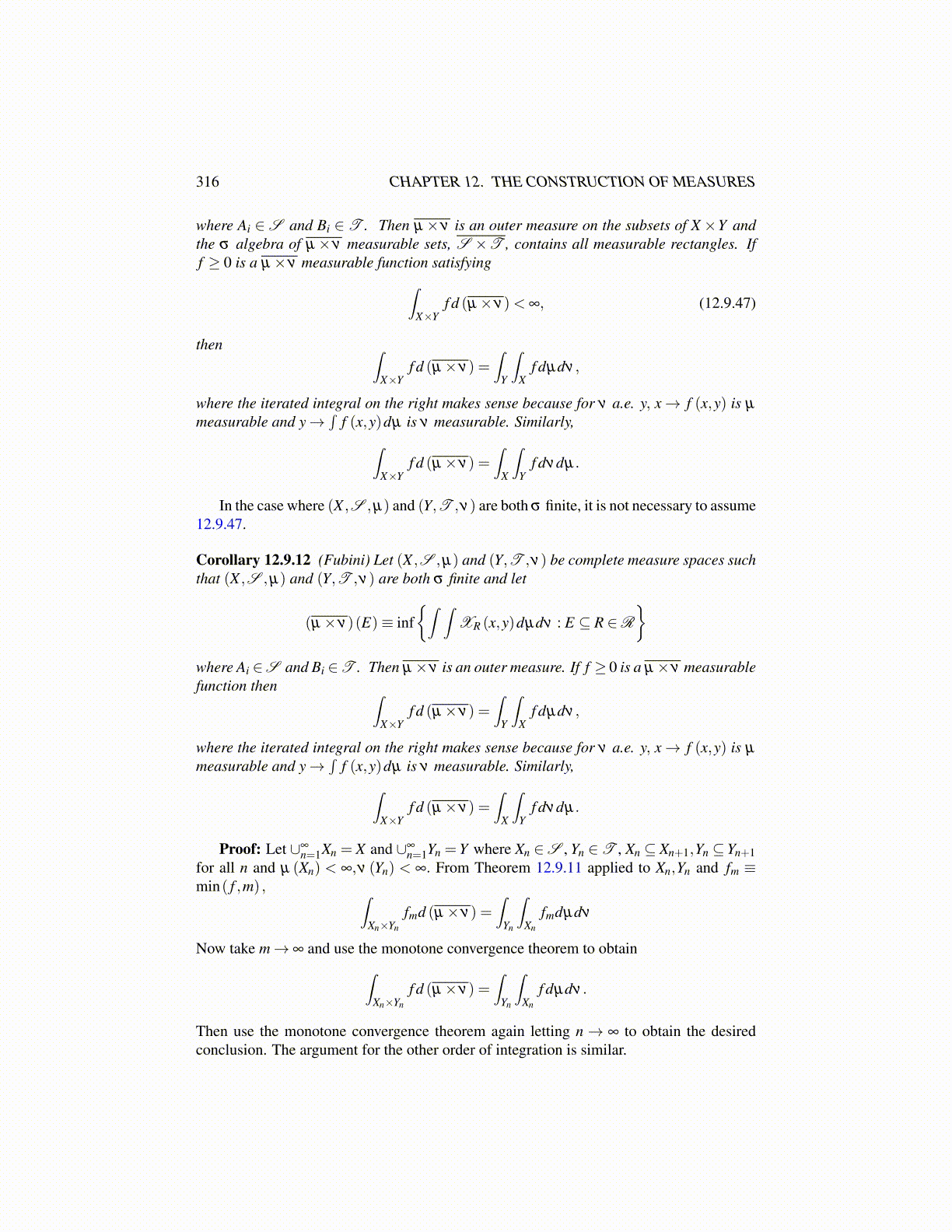
316 CHAPTER 12. THE CONSTRUCTION OF MEASURES
where Ai ∈S and Bi ∈ T . Then µ×ν is an outer measure on the subsets of X ×Y andthe σ algebra of µ×ν measurable sets, S ×T , contains all measurable rectangles. Iff ≥ 0 is a µ×ν measurable function satisfying∫
X×Yf d (µ×ν)< ∞, (12.9.47)
then ∫X×Y
f d (µ×ν) =∫
Y
∫X
f dµdν ,
where the iterated integral on the right makes sense because for ν a.e. y, x→ f (x,y) is µ
measurable and y→∫
f (x,y)dµ is ν measurable. Similarly,∫X×Y
f d (µ×ν) =∫
X
∫Y
f dνdµ.
In the case where (X ,S ,µ) and (Y,T ,ν) are both σ finite, it is not necessary to assume12.9.47.
Corollary 12.9.12 (Fubini) Let (X ,S ,µ) and (Y,T ,ν) be complete measure spaces suchthat (X ,S ,µ) and (Y,T ,ν) are both σ finite and let
(µ×ν)(E)≡ inf{∫ ∫
XR (x,y)dµdν : E ⊆ R ∈R
}where Ai ∈S and Bi ∈T . Then µ×ν is an outer measure. If f ≥ 0 is a µ×ν measurablefunction then ∫
X×Yf d (µ×ν) =
∫Y
∫X
f dµdν ,
where the iterated integral on the right makes sense because for ν a.e. y, x→ f (x,y) is µ
measurable and y→∫
f (x,y)dµ is ν measurable. Similarly,∫X×Y
f d (µ×ν) =∫
X
∫Y
f dνdµ.
Proof: Let ∪∞n=1Xn = X and ∪∞
n=1Yn =Y where Xn ∈S , Yn ∈T , Xn ⊆ Xn+1,Yn ⊆Yn+1for all n and µ (Xn) < ∞,ν (Yn) < ∞. From Theorem 12.9.11 applied to Xn,Yn and fm ≡min( f ,m) , ∫
Xn×Yn
fmd (µ×ν) =∫
Yn
∫Xn
fmdµdν
Now take m→ ∞ and use the monotone convergence theorem to obtain∫Xn×Yn
f d (µ×ν) =∫
Yn
∫Xn
f dµdν .
Then use the monotone convergence theorem again letting n→ ∞ to obtain the desiredconclusion. The argument for the other order of integration is similar.